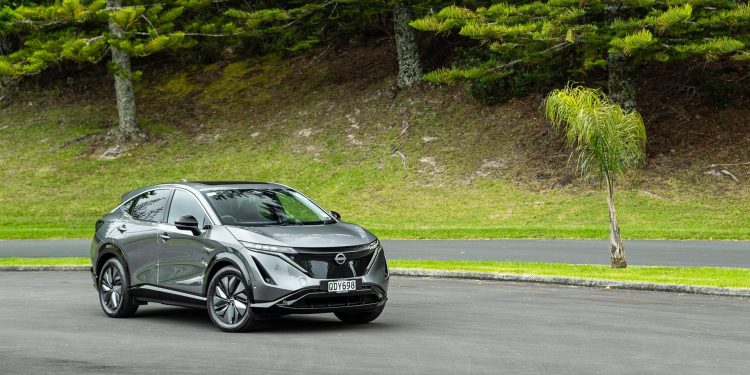2023 Nissan Ariya 90kWh review
Words: Peter Louisson | Photos: Isaac Western
The Ariya, pronounced Aria, is a big EV from Nissan arriving a decade on from the Leaf’s debut. We check out a front-drive UK variant.
Ariya is Nissan’s next-gen EV, a five-seat family crossover, due here in Q1. Regarding NZ specs we know very little officially.
However, there will likely be an entry-level front-drive variant and a pair of AWD models, with two battery pack sizes.
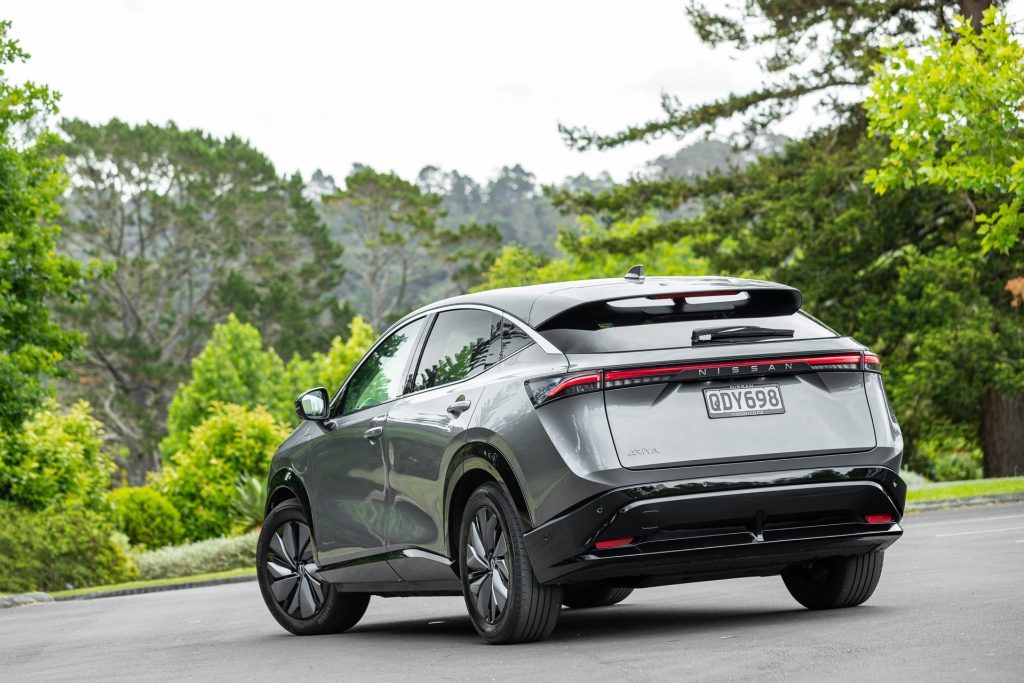
Nissan gave us one to sample, a front driver with the larger battery pack. It’s a UK evaluation model and we probably won’t be getting this particular one but not to worry – it’s the vibe that counts.
Ariya concept first emerged in 2019 and given Nissan’s existing model lines it’s no surprise this is an electric crossover.
Production of Ariya has been slow because of pandemic-related issues and chip shortages, which is why it has taken a while for it to arrive down under.
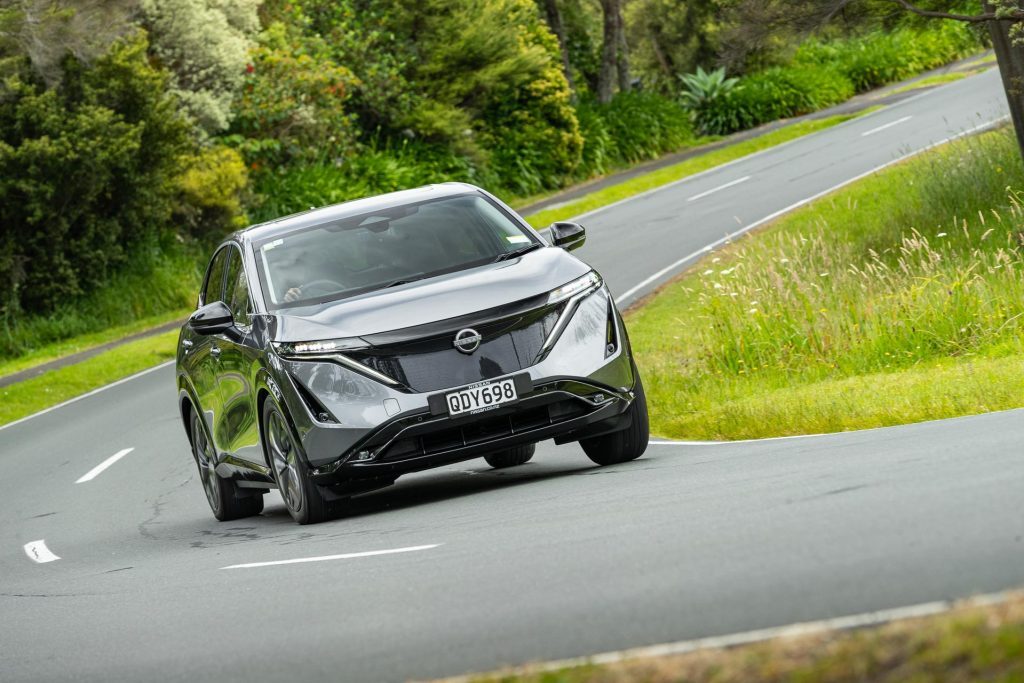
Quite the looker
At pick up I mispronounced its name. Awry-a is wrong; Aria is right. The car is said to have been named after the daughter of a high-level Nissan executive.
Or possibly after a Sanskrit word meaning honourable or perhaps a Hebrew word for lioness. Whatever, Nissan likes to imbue its models with names that actually mean something.
A few things are immediately obvious about Ariya. It is visually arresting, in the way SUV coupes sometimes can be. People wanted to know all about it.
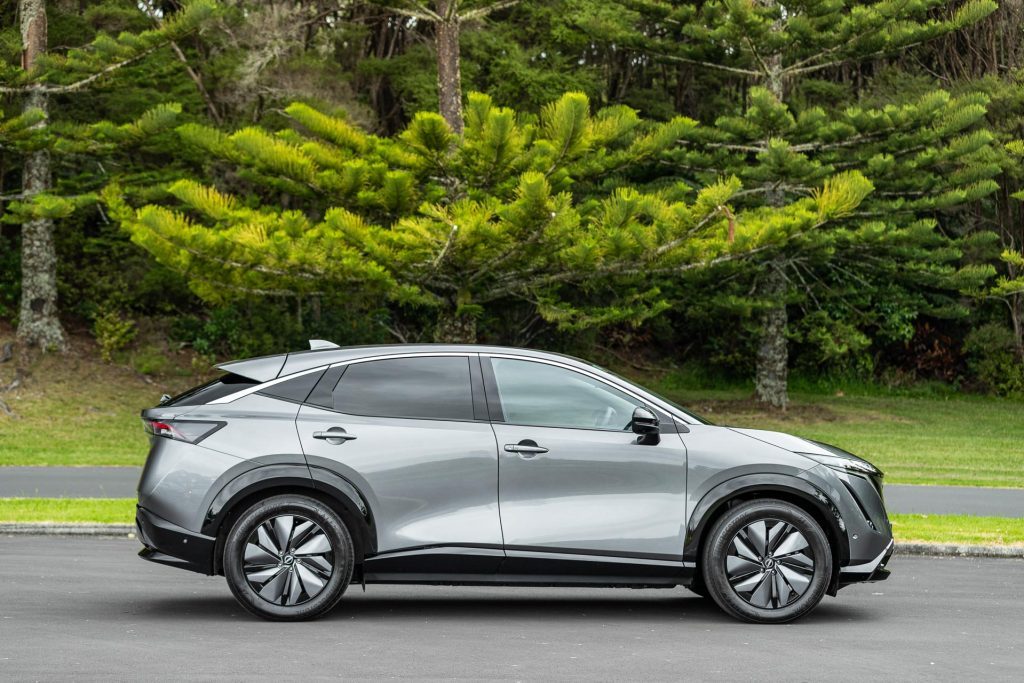
This seems to sit there all chunky and bristling, with a bulldog-like attitude. The futuristic shape doesn’t rely on character lines so much as overall form. Up front where a grille might be is a solid sheet of gloss black curved plastic.
In fact, all the external edge finishings are like this which gives it a bit of a Rangie vibe. It feels suitably premium on the inside too.
The vehicle is physically imposing. It’s larger than the Nissan Qashqai and VW I.D5, but not quite as long as Nissan’s X-Trail. Dimensions are 4.6m in length, 1.85m for width and it’s 1660mm high.
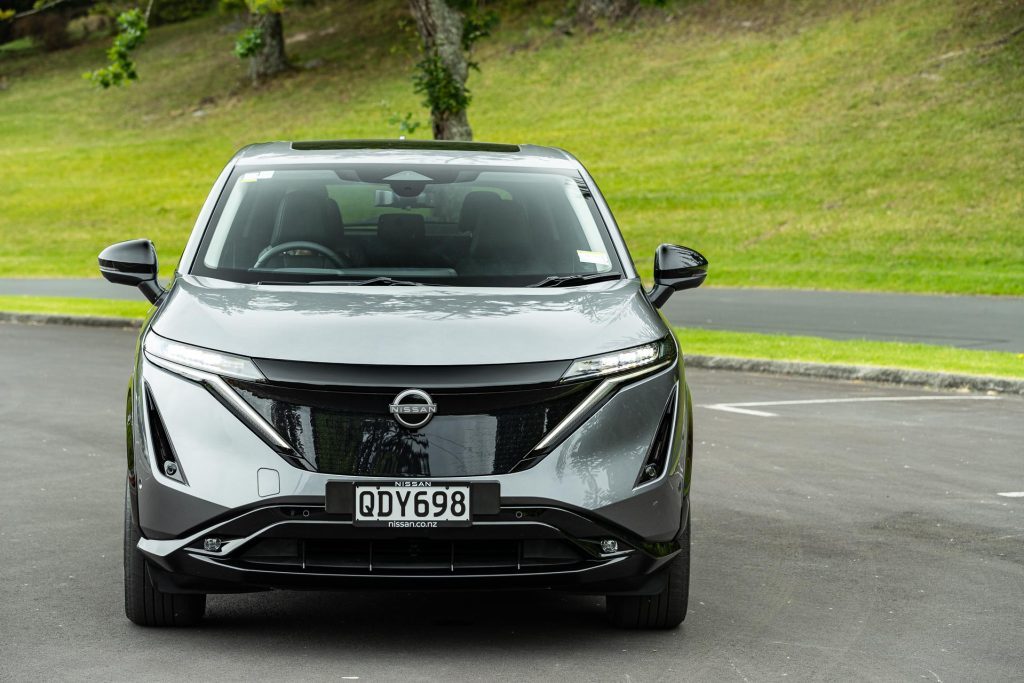
Tardis-like interior
Approach the car and it automatically unlocks; walk away and it’s the opposite. The door openings are huge so entry and exit are a doddle. Inside is voluminous, seemingly more so given the lack of a centre console.
A cushy powered driver’s seat slides forward into the saved position, as the steering column motors into the correct place. The instruments and infotainment screen are all under a single ‘monolith’ panel of glass while there’s no centre console as such.
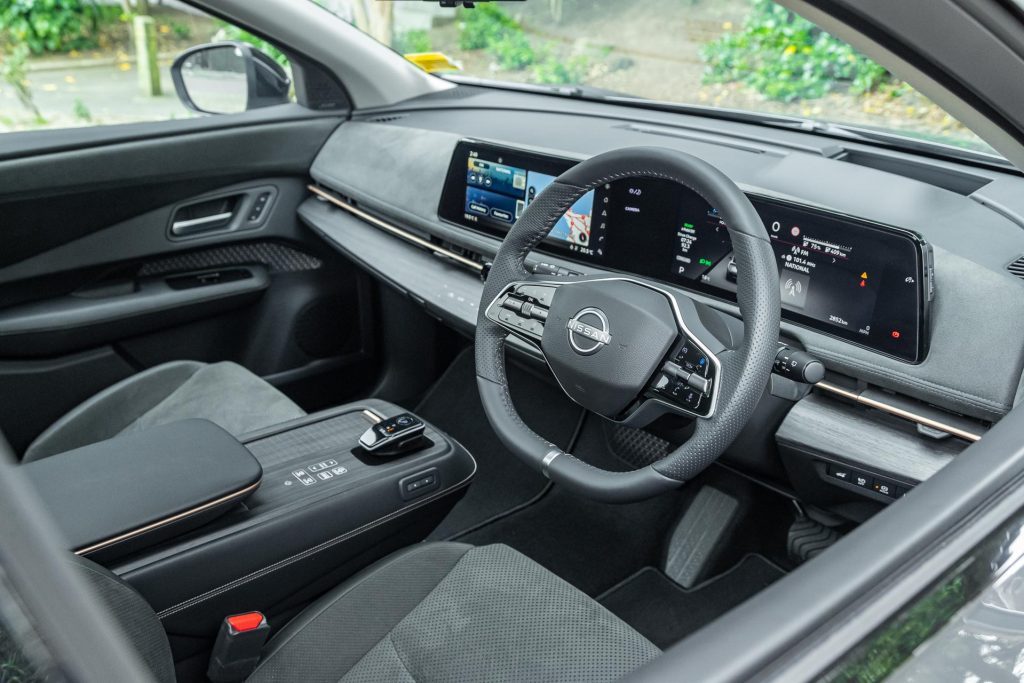
There’s a between-seats bin which is motorised. It can serve as a left leg brace if you want. Or you can send it backwards so the kids can charge their devices. In the console itself are the shift lever, a couple of drinks holders and a Qi charger under the arm rest.
There’s not much oddments space evident, aside from the flat floor area front and back. However, a large lined compartment folds down and out from under the dash at the push of a console button, good for secreting stuff you don’t want seen. There’s also a conventional glove compartment in the usual place.
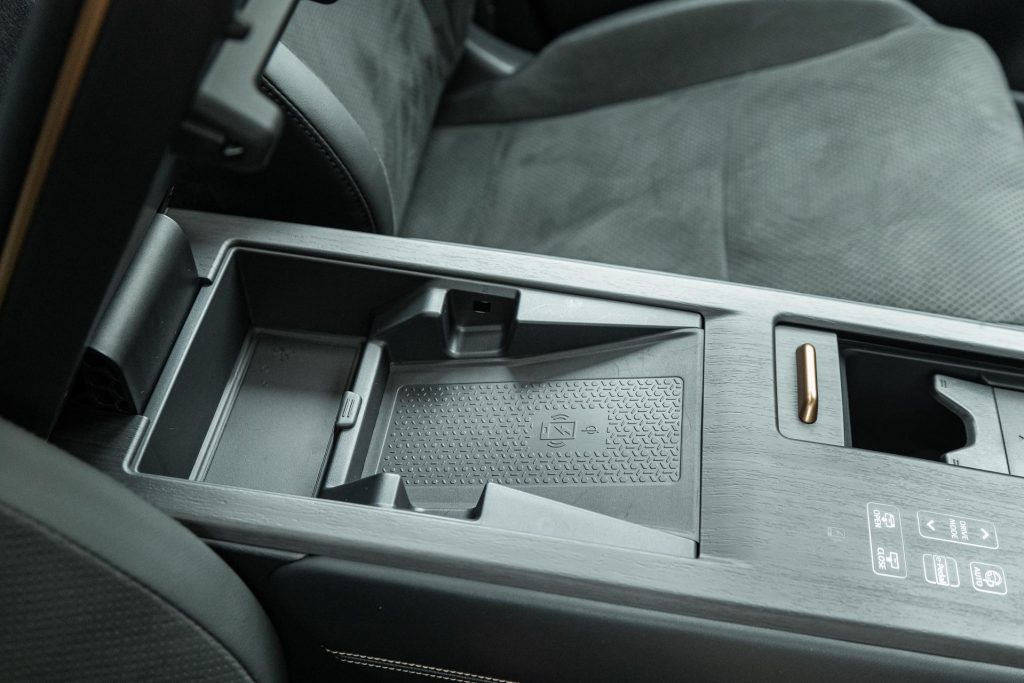
In the back is abundant space for three, typical of modern EVs. That’s mainly because the electric gubbins up front are compact, leaving more room for occupant lounging.
Peering out through the big windscreen, there’s not much to see as the bonnet is so abbreviated.
What lies beneath?
Ah yes, the $64k question. Nissan NZ hasn’t said yet but hazarding a guess based on UK models there’s a 90kWh battery pack and when fully charged the Ariya indicated there were 520km to empty.
Energy consumption based on UK WLTP data is 17.6kWh/100km. We saw figures below that, around 15 taking it easy, and in town.
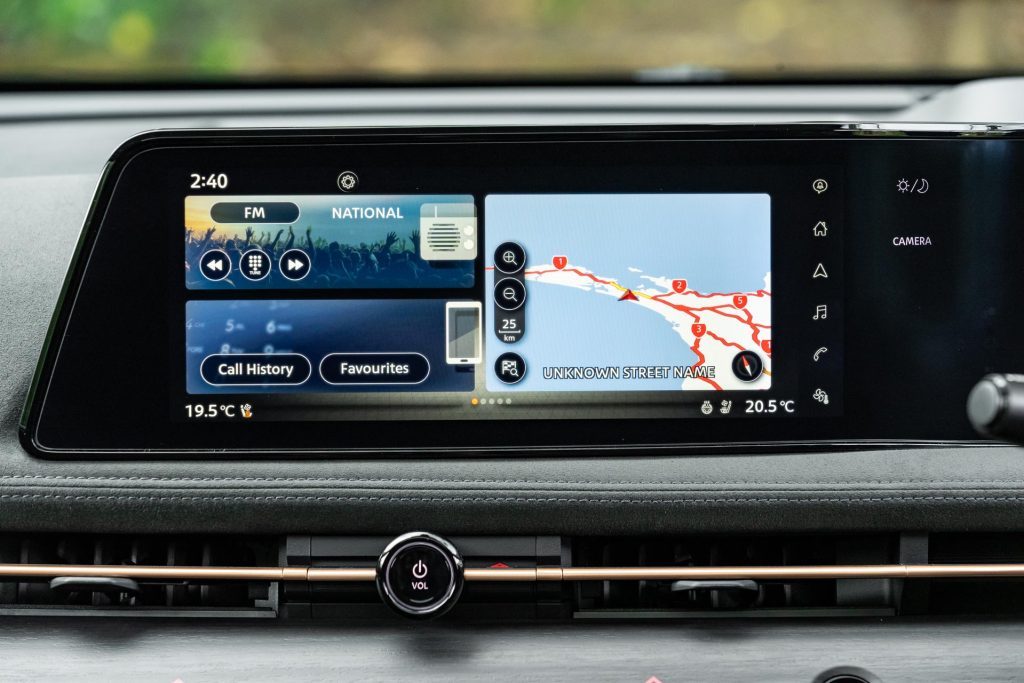
Evidently the two incoming AWD versions will have the 65kWh (63 usable) and 90kWh battery packs (87 net), the former with system output of 250kW and 560Nm, the latter with 290kW and 600Nm.
Both have sprint times in the 5sec range. Evidently these respective models are good for “up to” 430km and “up to” 580km of range.
On one particular day we drove 200km on rural roads and with performance testing included it used up almost half a charge and indicated there were 250km left.
So a 450km real world figure sounds about right for the 90kWh pack. More careful drivers might well do better.
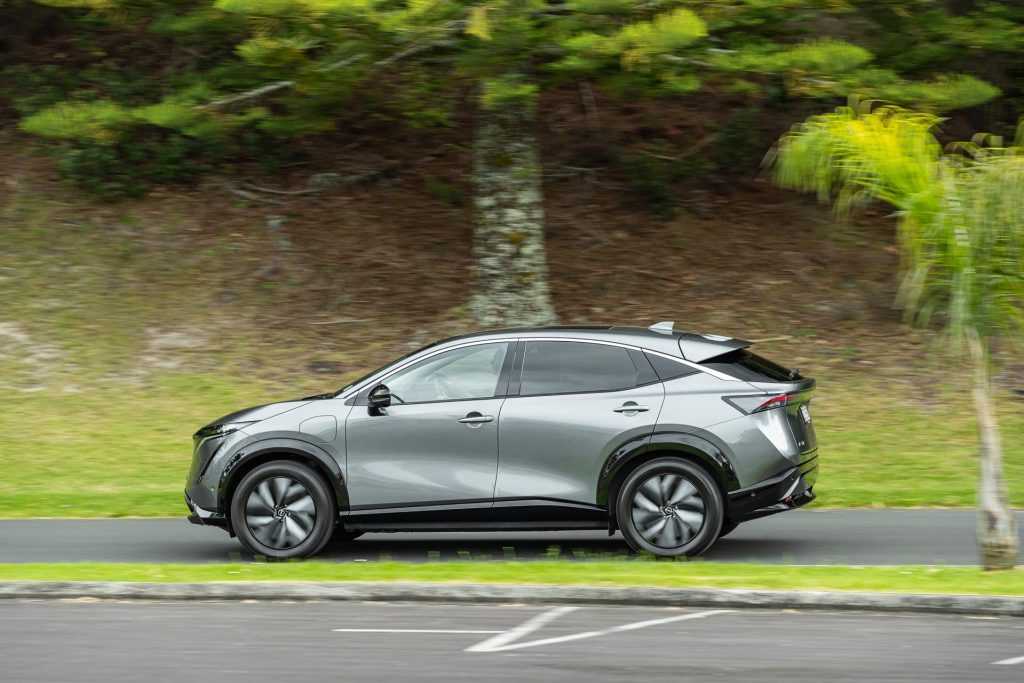
Base FWD model
The vehicle we drove was a front driver, with the bigger battery pack. That comes with 178kW and 300Nm of torque, and is said to complete the 0-100 dash in 7.6sec.
That’s essentially what we got. However, we believe the Kiwi FWD option will come with the smaller battery and while torque is no different at 300Nm, power is down slightly to 160kW.
But then weight is also less by around 200kg so it’s likely as quick.

How does the model we’re probably not getting here go? Who cares, you’re probably thinking. Perhaps but it does give something of an indication.
Unlike some entry-level medium electric crossovers we’ve driven that didn’t quite perform to expectations, this one does. It’s stroppiest in Sport mode but for our entire drive the Standard setting proved fine.
Balanced performance
On the open road, this thing really rocks. Not in the rock and roll sense – cornering feels relatively level – but it just feels relaxing to helm, it’s quiet as a field mouse, and overtakes with the gusto of an energiser bunny when need be.
Initially, we heard a fan noise that confused, until we discovered seat ventilation was on. Thereafter, it was the very model of quietness.
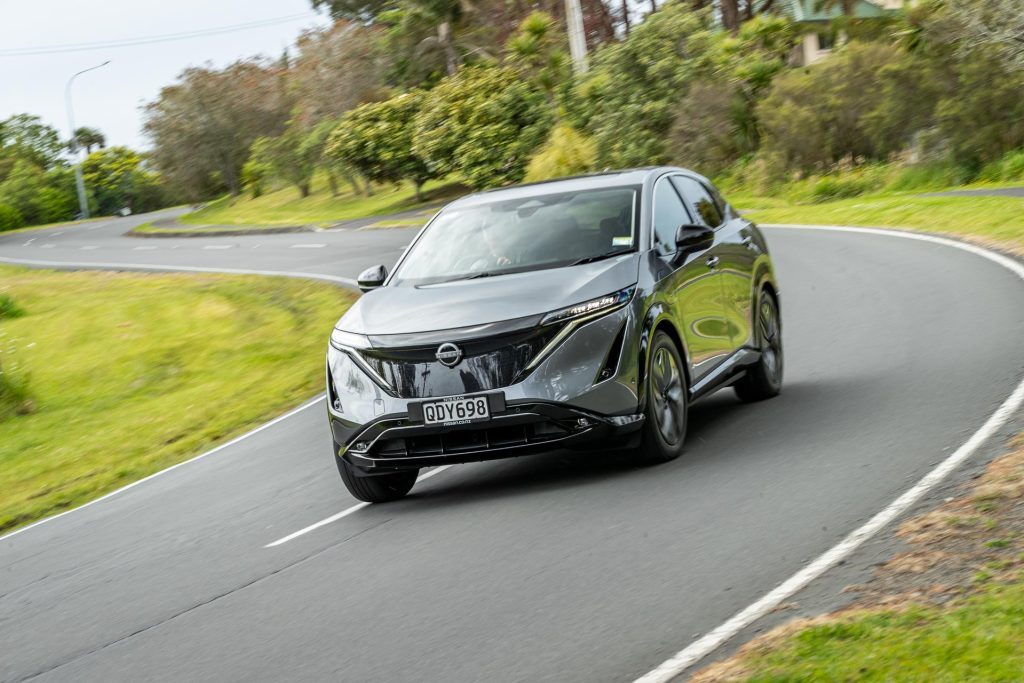
There’s an intermittent backing noise to let those outside know you’re reversing but in the forward direction it’s hushed on chip seal, with cabin readings of no more than 67.5dB. Bridgestone Alenzas are in part responsible.
This is a solid enough vehicle thanks to its big battery, with a claimed kerb weight of 2121kg.
However, the model with the smaller battery pack evidently weighs in at 1920kg, which explains why it is roughly as quick in a straight line. Handling is sound thanks in part to high-performance dampers, multilink suspension and soft motor mounts.
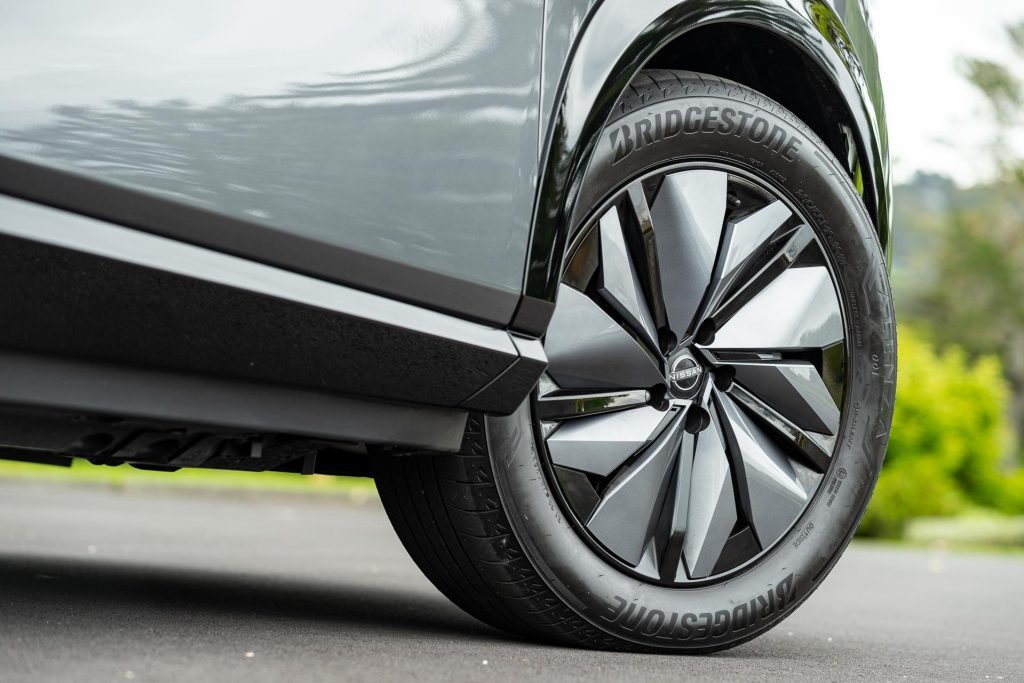
Cornering is reasonably neutral, reflecting a near 50/50 weight split, with eventual understeer heralded by the tyres begging you to call time.
A lift-off sees the front dutifully return to its intended path. The steering is consistent and accurate, if not that feelsome.
Ditto the brake pedal, easy enough to modulate but with little in the way of sensitivity.
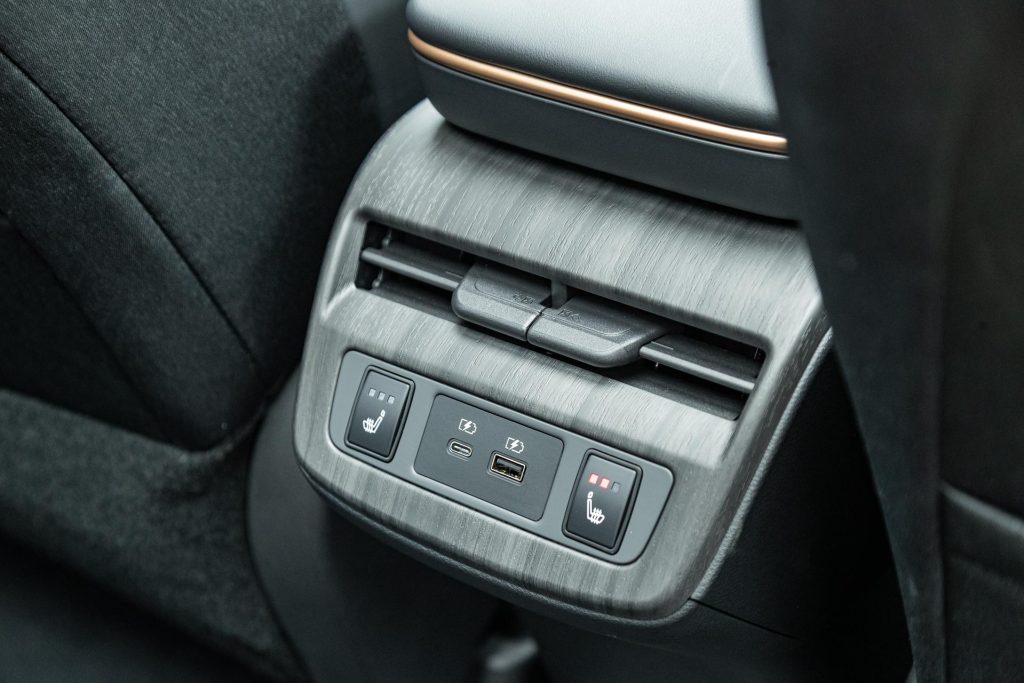
Paddle-less regen
There are different levels of regenerative braking and Nissan has sorted this rather well, despite there being no paddles.
Max regen occurs in the Sport mode, while there’s a modest braking effect on liftoff in the Standard setting. Eco has none when Ariya coasts on a dead throttle.
There’s also a B mode on the shift lever which is quite handy when Standard mode regen isn’t sufficient. While it’s not quite single-pedal driving there’s a dedicated button for that. Brakes themselves are good when called upon, with two emergency stops in the 34m zone.
This then is a handy drive, but it’s really the ride that is the highlight. You sit up quite high so visibility is good, though not quite stellar out through the rear window.
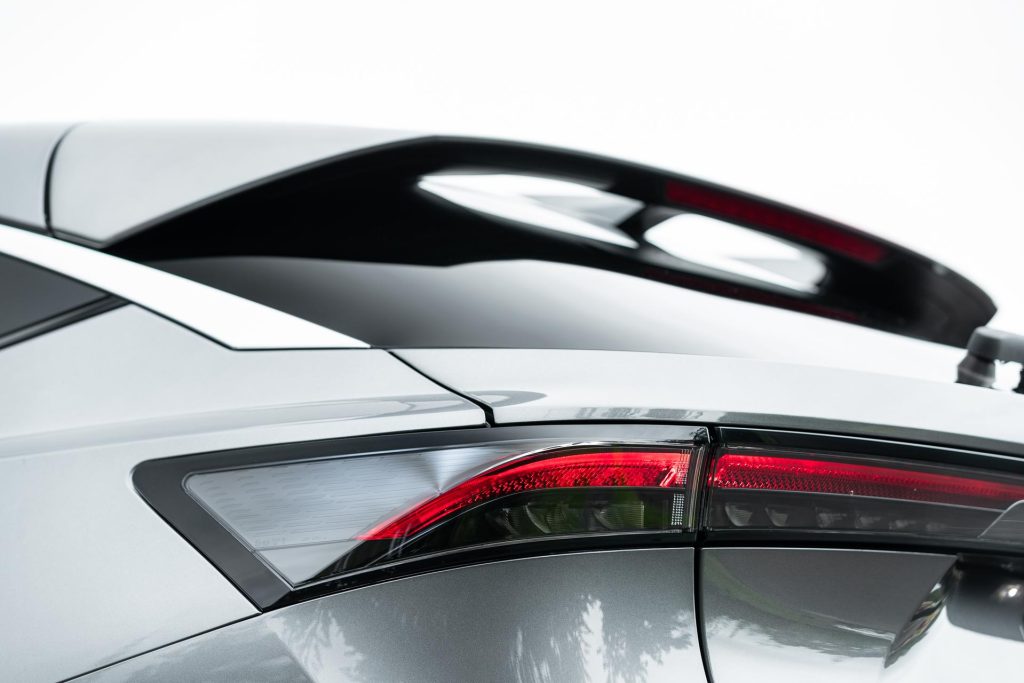
However, there’s a switch on the interior mirror that gives a camera view of what’s behind. Seat comfort is excellent, lumbar support solid with the pump maxed out.
At rural speeds, the suspension dips and rebounds beautifully over bumps, giving a composed ride. And tyre noise is negligible, wind noise low thanks to a Cd of 0.297.
Some unknowns
While spec and price are unclear, it’s likely to feature Nissan’s Safety Shield system which includes a surround view monitor, forward collision warning, and AEB both for front and rear potential crash situations.
Our vehicle featured adaptive cruise with lane keeping, and upmarket upholstery. We’d expect a price point of around the $80k mark for the entry AWD variant, and perhaps a shade less for the base model, a tad extra for the more potent AWD example. Ballpark figures, of course.
It will front up against the likes of similarly sized vehicles such as Tesla Model Y, Hyundai Ioniq 5 and Kia EV6. Expect first arrivals around March/April.
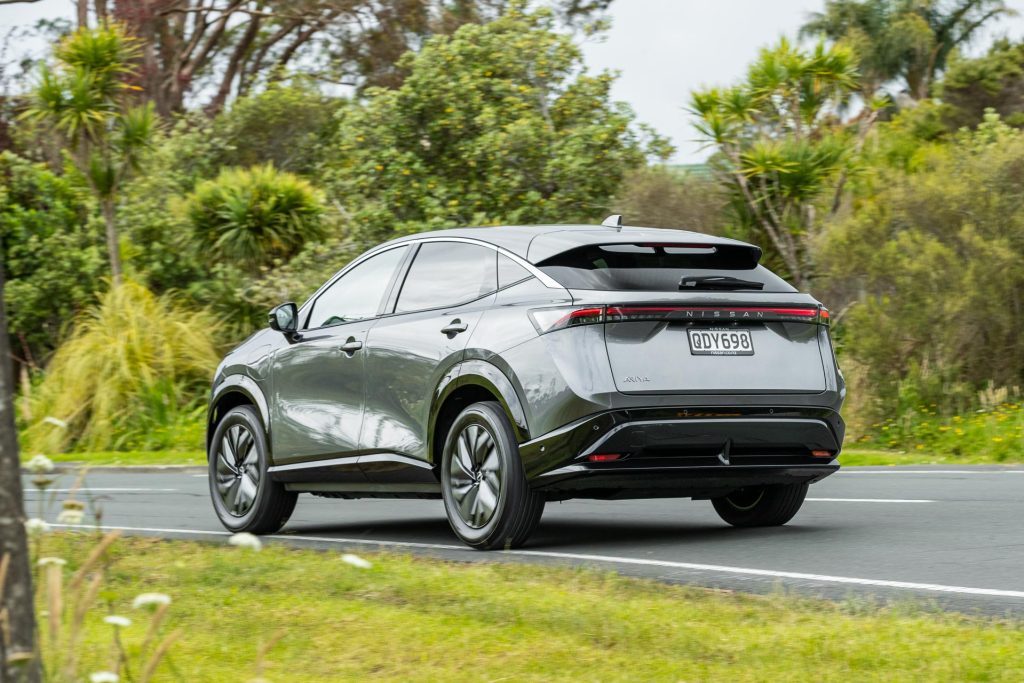
Some have already voted with their pocketbook.
We imagine most will pony up the extra for the e-4ORCE AWD variants, especially with up to 290kW on tap.
Whatever, Ariya is a far cry from the Leaf and promises Nissan will become another significant player in the electric SUV area.
| Model | Nissan Ariya FWD 90kWh |
| Price | $ TBC |
| Motor | 178kW/300Nm |
| Battery | 87.0kWh net |
| Range | 530km |
| Drivetrain | single-speed auto, FWD |
| Energy Use | 17.6kWh/100km |
| C02 Output | 0g/km |
| 0-100km/h | 7.65sec |
| 80-120km/h | 4.51sec (128.6m) |
| 100-0km/h | 34.6m |
| Stability systems | ABS, ESP |
| Safety | AEB, ACC, BSM, LDW, RCTA, ALK, AHB |
| Luggage capacity | 468-1350L |
| Tow rating | 750kg |
| Service intervals | 12 months, 24,000km |
| Warranty | TBC |
| ANCAP rating | not yet rated |
| Weight | 2125kg (claimed) |
This article first appeared in the December/January issue of NZ Autocar Magazine.


